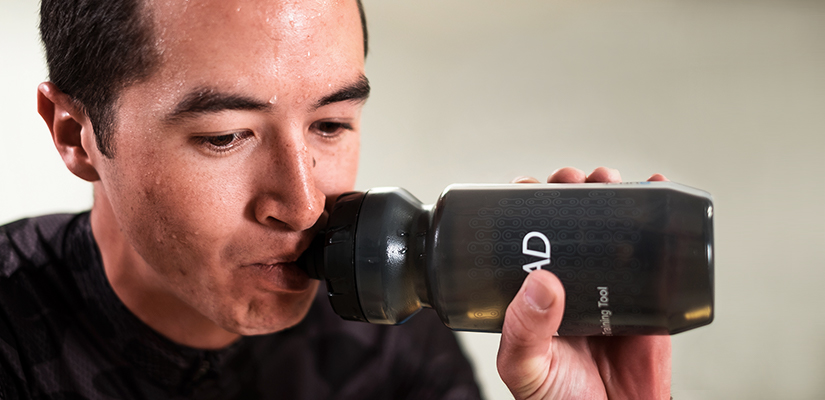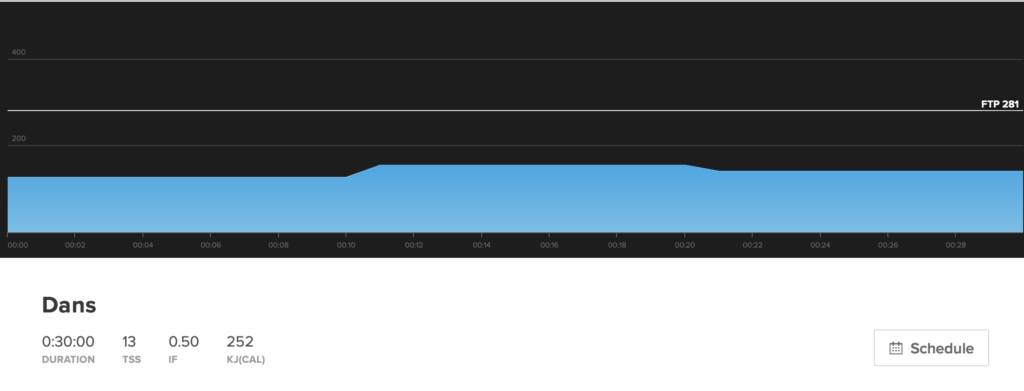Fasted Cycling: Program Your Body to Burn Fat with Fasted Training

What if you could re-engineer your body to function at its peak and burn fat more efficiently by simply changing what you consume before a workout? That might sound like an opening line straight out of an infomercial selling a miracle weight loss pill, yet that’s the promise of fasted cycling training. But will it work for you? We’ll cover the benefits, disadvantages, and more in this guide to fasted training.
What is Fasted Training?
Fasted cycling training is simply completing a workout in a low glycemic state by not consuming any carbohydrates within eight to twelve hours. Typically, you would only drink only water or coffee before or during. The primary goal of fasted training is to increase your ability to metabolize fat by depriving your body of glycogen.
Adaptive Training
Get the right workout, every time with training that adapts to you.
Check Out TrainerRoadThe primary goal of fasted cycling training is to increase your body’s ability to metabolize fat by depriving your body of glycogen. The aerobic system, which is the main energy source for endurance athletes, uses both fat and glycogen for fuel. When you ride in a low glycemic state, your body is forced to use fat instead of sugar. However, you will have to intervene by restricting carbohydrates for this to happen. The easiest way to do this is fast overnight, then complete a workout without consuming any carbohydrates.
Does Fasted Cycling Work?
When you train in a fasted state, your body gradually replaces glycogen consumption with burning fat during the workout. This is how all that fat-burning magic happens. But do fasted rides work? As always, it depends on your goals.
Yes, fasted cycling training will help you burn more fat. It also helps your body improve its metabolism when you’re in a rested state. So while many athletes go into fasted training with the sheer desire to lose fat, they’re also making their bodies better at metabolizing fat across the board.
Can Fasted Cycling Help with Weight Loss?
Fasted cardio and weight loss is a hot topic. The simple formula for weight loss is to burn more calories than you consume, and while fasted training can help you burn more fat, but it doesn’t help you burn more calories overall. Without carbohydrates, the length and intensity of your workout will be severely limited—meaning you’ll burn fewer calories in total. Additionally, the high-intensity exercise burns more calories afterward by increasing your post-exercise oxygen consumption.1 And that’s not to mention that it can lead to increased hunger and cravings post-workout.
While fasted cycling will help you burn more fat, it could hinder your ability to sustain long-term. In a 2017 review, researchers concluded that fasted exercise effects on body mass were “trivial.”2 It’s also important to note that research suggests that training in a fasted state has less pronounced effects for women.3 On a positive note, fasted cycling might help improve insulin resistance.4
What About Cycling Performance?
Aside from weight loss, can fasted cycling training increase your cycling performance? The short answer is yes. Training in a low glycemic state will improve your ability to oxidize fat at an endurance pace. In terms of aerobic adaptation, fasted training can help increase gene expression, leading to greater mitochondrial biogenesis.5 Additionally, research suggests that fasted rides might increase the cytokine interleukin-6 (IL-6), which helps increase fat metabolism, improve resistance to muscle tissue damage, and improve cognitive function.6
That said, fasted training is at best a marginal gain for athletes searching for the last bit of improvement. For most, your efforts would be better focused on improving consistency, recovery, sleep, or nutrition.
How To Implement Fasted Training
Before you begin to implement fasted rides, we recommend nailing the rest of your training regimen—consistency, recovery, sleep, and nutrition. If you’re ready for it, there are two manageable and smart ways you can implement fasted training into your routine. The first involves doing your workouts earlier in the day after you’ve had a night of rest and before you’ve had anything to eat. The second way to implement fasted cycling training involves two-a-days.
When Should I include Fasted Training?
Early morning workouts are typical for those who do fasted training. After 12+ hours of not consuming any carbohydrates, most people’s liver stores are depleted, and their muscle stores have just enough glycogen in them to get the person through a 60-90 minute workout. This is one of the reasons TrainerRoad’s workouts and structured training plans work well with fasted training—they’re all about that duration.
The second way you can implement fasted training into your routine is by doing two-a-days, i.e., completing two workouts in a 24-hour timeframe. If you’re the type of athlete who feels like they can’t get their best high-intensity workouts done in the mornings, this is probably your best option. I know it is for me.
In the mornings, again, before you’ve had anything to eat except for maybe a cup of black coffee, do a soft-pedal workout for about 30 minutes — we recommend the workout Dans for this — to reap the benefits of fasted training. Then, in the afternoons or evenings, complete your higher intensity workouts. If two-a-days sound like something you might like, start by giving it a try three times a week right out of bed and see how you feel.
How Long Should My Fasted Ride Be?
If you plan on doing a workout that’s more than 60-90 minutes and you’re going into it fasted, be warned. You are probably going to start breaking down muscle. During a workout, it takes about 60-90 minutes to exhaust your glycogen stores.
Once your muscle stores are deficient in glycogen, you can expect to hit a wall in your workout unless your intensity stays relatively low. How soon until that fatigued feeling consumes you will depend on the intensity of your workout. Because lower intensity workouts require less and sometimes very little glycogen, you’ll likely be able to last well past that 60-90 minute period without introducing fuel on the bike.
Be very mindful of how you’re feeling, and don’t be afraid to bail out of your workout if you need or introduce some quick-digesting carbohydrate into the mix. Something like a sports drink or even a gel washed down with plenty of water should do the trick. One way to tell you’ve crossed that line is the smell of ammonia on your breath.
Caffeine’s Role in Fasted Training
It’s common for athletes who use fasted training to drink coffee just before the workout. This is a good idea because, as we all know, caffeine encourages fat metabolism. The trouble is, all coffee, better yet, all coffee creamers are not created equal. In fact, most will reverse the effects of fasted training.
The Best Cycling Workouts for Fasted Training
Since depletion occurs naturally after a 60-90 minute workout, I do not advocate doing high-intensity training in a depleted state. Depletion should come before low-intensity work or after high-intensity work—but not before high-intensity work. High-intensity work absolutely needs to be fueled if you want to reap the maximum benefit from your workout—you can’t do that in a glycogen-depleted state.

A good idea is to start slow when adding fasted rides to your training. You can give it a try by adding Dans to your calendar. Dans is a shorter active recovery ride. Once you feel comfortable, you can increase the duration, but keep the intensity low with Lazy Mountain.
Pros and Cons of Fasted Rides
We’ve gone over most of the positives of fasted training. Increased fat metabolization can help cycling for weight loss, improve body composition, and reduce your reliance on carbohydrates during low-intensity rides. However, some negatives come along with the benefits.
However, fasted training increases the stress on your body, especially as the intensity ratchets upward. This can overwhelm your ability to recover fully, which will compromise the quality of future workouts.7 The single best way to get faster is to consistently complete the workouts in your training plan. Fasted rides can quickly derail your training plan. This is why it’s a good idea to start slow and limit fasted rides to only a couple of times per week.
Final Words
While fasted training might not be as easy as taking a “miracle” diet pill to lose weight, it can be effective. When you practice fasted training, not only will your body burn more fat during your workouts, it’ll also become programmed to favor fat as its fuel source even when you’re off the bike. But just like any other training tool, fasted training has its place and should be used only when the time is right.
References
1. Tucker WJ, Angadi SS, Gaesser GA. Excess Postexercise Oxygen Consumption After High-Intensity and Sprint Interval Exercise, and Continuous Steady-State Exercise. J Strength Cond Res. 2016.
2. Hackett, D.; Hagstrom, A.D. Effect of Overnight Fasted Exercise on Weight Loss and Body Composition: A Systematic Review and Meta-Analysis. J. Funct. Morphol. Kinesiol. 2017.
3. Gillen JB, Percival ME, Ludzki A, Tarnopolsky MA, Gibala MJ. Interval training in the fed or fasted state improves body composition and muscle oxidative capacity in overweight women. Obesity (Silver Spring). 2013.
4.Van Proeyen K, Szlufcik K, Nielens H, Pelgrim K, Deldicque L, Hesselink M, Van Veldhoven PP, Hespel P. Training in the fasted state improves glucose tolerance during fat-rich diet. J Physiol. 2010.
5. Psilander N, Frank P, Flockhart M, Sahlin K. Exercise with low glycogen increases PGC-1α gene expression in human skeletal muscle. Eur J Appl Physiol. 2013.
6. Wueest, Stephan, et. al. Interleukin-6 contributes to early fasting-induced free fatty acid mobilization in mice. American journal of physiology. Regulatory, integrative and comparative physiology. (201.
7. Terada T, Toghi Eshghi SR, et. al. Overnight fasting compromises exercise intensity and volume during sprint interval training but improves high-intensity aerobic endurance. J Sports Med Phys Fitness. 2019.
For more answers to your cycling training questions, listen to Ask a Cycling Coach — the only podcast dedicated to making you a faster cyclist. New episodes are released weekly.